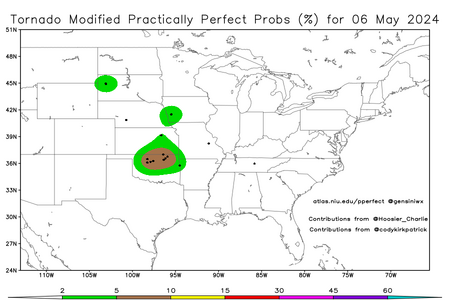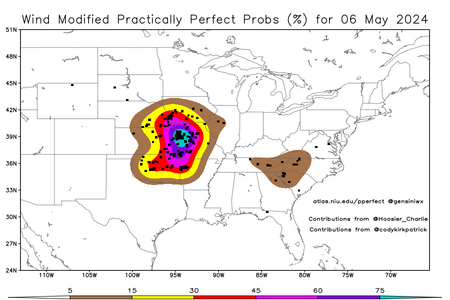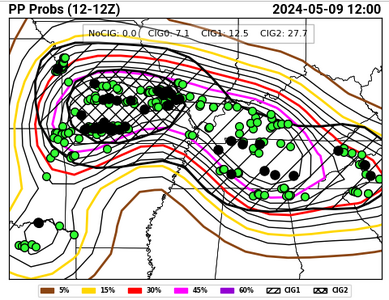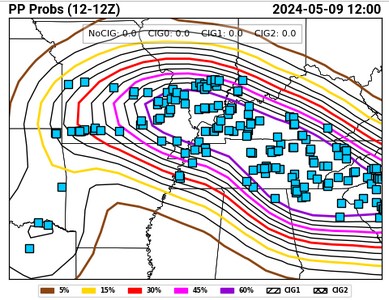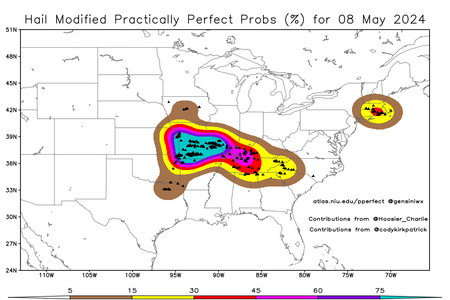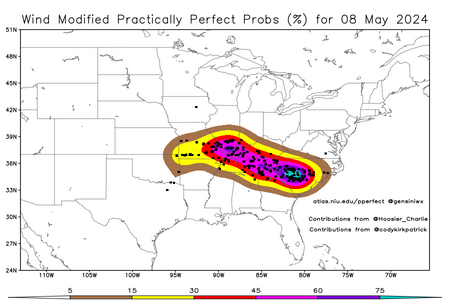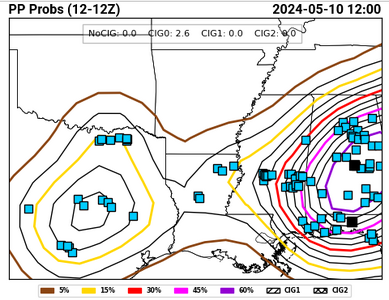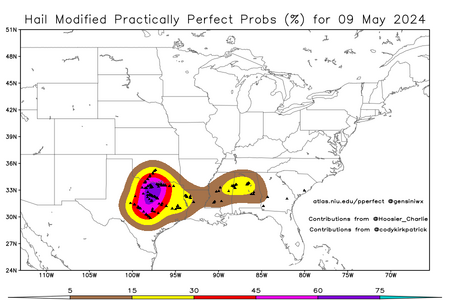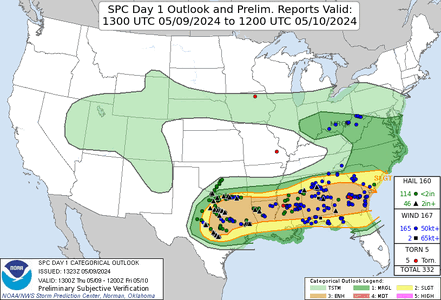Jason N
EF4
I guess some of that will come down to how many Sig Tors there were yesterday, I would say 1 for sure, perhaps 2? but I stopped watching after the Barnell storm, so I don't know if anything formed after that. if it ends up being just one report of a sig tor, is that considered enough to call it a hit? .. I mean, their reasoning for upgrading to, valid. But I wonder when they updated it last evening to trim the area, should they have just gotten rid of the High and left MDT. but here I am, hind sighting lol.
One thing they don't do is discriminate with SLIGHT, MDT, or HIGH on whether its tornadic or not, their categories are irrespective of tornadoes, just severe, and longevity. So based on those conditions, they probably hit what they forecast.
One thing they don't do is discriminate with SLIGHT, MDT, or HIGH on whether its tornadic or not, their categories are irrespective of tornadoes, just severe, and longevity. So based on those conditions, they probably hit what they forecast.


